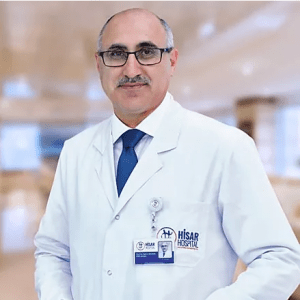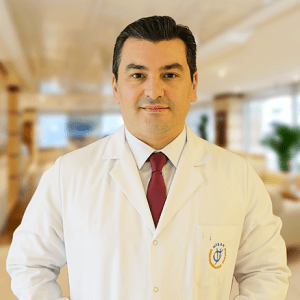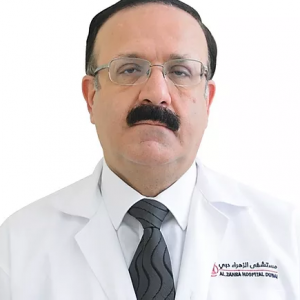Glottic Stenosis
Glottic stenosis is a condition where the larynx or the voice box narrows specially where the voice cords are scarred together. Scarring of the voice cords usually develop mainly between the tissue that surrounds the vocal cords and the two vocal folds, thus impeding their movement. Posterior glottic stenosis, on the other hand, which is the narrowing, in the back of the vocal fold area sometimes occurs in conjunction with subglottic stenosis. About 90 percent of the cases, people get glottic stenosis as a result of prolonged endotracheal intubation. Only 10 percent of the cases are congenital or which is present at the birth. Read More
Top Doctors For Glottic Stenosis Treatments
Top Hospitals For Glottic Stenosis Treatments
Glottic Stenosis
What is the function of the Glottis?
It is a part of the larynx that consists of vocal cords and also the opening between them. The function of the glottis is to produce sound. It allows the folds free edges to vibrate against one another. Apart from that, it also acts as the laryngeal sphincter especially when they are closed.
Glottic Stenosis Staging System:
The staging system of glottic stenosis are as follows:
Stage 1 – Glottic-interarytenoid scar and normal posterior commissure
In this stage, a very thin glottic web, that involves less than 35% of the glottis as well as the vocal cords are very visible. Usually patients in this stage will have no airway issues yet present with mild voice alteration.
Stage 2 – Interarytenoid and scarring due to posterior commissure
In this stage, the presence of a thicker web, that involves 35 to 50% of the glottis as well as the vocal cords are visible as well. Usually patients at this stage present with mild airway and voice problems.
Stage 3: Posterior commissure scarring as well as one cricoarytenoid joint scarred
In this stage, a very thick web will be present, that involves 50% to 75% of the glottis along with subglottic extension. Vocal cords in this type are not visible. Usually patients present will be marked with voice problems as well as airway problems.
Stage 4: Posterior commissure scarring and also both CA joints will be scarred
In this stage, a thick web will be present that involves 75% to 90% of the glottis along with impossible vocal cord identification since they appear as a thick band that is continuous. In this stage, a very severe airway issue which frequently requires an emergency tracheostomy will be needed.
Diagnosis and Treatment of Glottic Stenosis:
The diagnosis and treatment procedures for glottic stenosis are as follows:
Prior to the treatment:
- Basic physical examination will be performed to determine the overall health condition of the patient
- Your doctor will first perform nasopharyngolaryngoscopy (NPL) in order to examine the back of the throat, vocal cords and also larynx
- In order to differentiate between glottic stenosis from paralysis of vocal cord, your doctor may perform bronchoscopy and also microlaryngoscopy. This is done under normal anesthesia.
- Apart from this, flexible fiberoptic endoscopy will also be performed in order to determine the initial glottic stenosis diagnosis
- Pulmonary evaluation, nutrition as well as GI will also be necessary
- Biopsy of the stenotic area can mainly determine the medical condition cause also. It may be therapeutic also
During the treatment:
Treatment usually depends on the thickness as well as the size of the scar band. Posterior glottic stenosis is treated under open surgery or endoscopically
Treating a small scar band:
A small scar band is usually treated endoscopically under anesthesia in the operating room. During the microlaryngoscopy and bronchoscopy treatment procedure, the scar band is usually identified and also cut. The area is usually then gently dilated with a balloon catheter.
Treating a large scar band:
In order to divide the scar band as well as enlarge the airway with a cartilage graft, it usually requires an open surgery which is called a laryngotracheal stenosis or reconstruction procedure. It is usually performed in a double-staged fashion or in a single-stage. Your doctor as well as the airway team usually suggests the safest technique.
Prognosis, Post-treatment and Recovery:
- Post-treatment Mitomycin C is usually given for the prevention of stenosis or adhesion mainly after otolaryngological surgery
- Medications and post-treatment follow ups will be recommended by your doctor after the surgical treatment
- Recovery usually takes two weeks for the patient to get back to normal activities post surgical treatment
Glottic Stenosis Complications:
Some of the postoperative complications that arises with glottic stenosis are as follows:
- Bleeding and wound infection
- Subcutaneous emphysema
- Neurological or vascular issues
- Mucus and secretions
- Stenosis recurrence
- chronic aspiration
- Infection,
- Keel extrusion,
- Chondritis,
- Dysphonia,
- Granulation tissue formation
- Tracheostomy dependence
Glottic Stenosis Risk Factors:
Few of the risk factors associated with glottic stenosis are as follows:
- Its challenging in terms of managing as well as for good functional outcomes in the case of airway stenosis that involves the glottis
- Development of sudden or mainly worsening airway obstruction after postoperative period
- The other risk factors for poor outcome mainly includes the patient’s comorbidities
Symptoms
Some of the symptoms of glottic stenosis are as follows:
- Noisy breathing while inhaling and exhaling (Biphasic stridor)
- Shortness of breath
- Difficulty eating
- Difficulty breathing
- Hoarseness
- Change of voice
- Apnoea
- Recurrent croup
- Vocal folds paralysis
- Closed glottis
Causes
Few of the causes of glottic stenosis are as follows:
- Syphilis
- Fungal infections
- Diphtheria
- Tuberculosis
- Sarcoidosis
- Rhinoscleroma
- Granulomatosis with polyangiitis (GPA)
- Congenital or acquired at birth
FAQ
1. What is subglottic stenosis?
Subglottic stenosis (SGS) is generally the narrowing of the airway that is below the vocal cords or subglottic as well as above the trachea. Subglottic stenosis usually involves narrowing of the cricoid split which is actually the only complete cartilage ring that is in the airway.
2. What is the left recurrent laryngeal nerve? What is laryngeal nerve damage?
The left recurrent laryngeal nerve normally arises from the vagus towards the left of the arch of the aorta. The nerve then curves inferior to the aortic arch and also ascends in the groove that is between the trachea as well as the esophagus. The Laryngeal nerve damage is actually the injury of either one or both the nerves that are attached to voice box.
3. What is the function of intrinsic laryngeal muscles?
The function of the intrinsic muscles of the larynx is the muscle that is responsible for sound production as well as the movements of the laryngeal cartilages and also the folds themselves.
4. What is velopharyngeal closure?
Velopharyngeal closure or VPC is in fact an important part of the speech. Air is usually allowed to escape through the nose if VPC is inadequate. It leads to nasal resonance during the time of speech.
5. Where is the glottic edema?
It is the abnormal accumulation of fluid that is present in the tissues which involves the supraglottic and the subglottic region, where the laryngeal mucosa is loose.
6. What is stenosis of larynx?
It is usually a congenital or acquired form of narrowing of the airway that at times affect the supraglottis, glottis and also the subglottis.
7. What is congenital subglottic stenosis?
It is usually the acquired narrowing of subglottic airway during birth





























































































